Mayank Mishra
Ladder-residual: parallelism-aware architecture for accelerating large model inference with communication overlapping
Jan 11, 2025



Abstract:Large language model inference is both memory-intensive and time-consuming, often requiring distributed algorithms to efficiently scale. Various model parallelism strategies are used in multi-gpu training and inference to partition computation across multiple devices, reducing memory load and computation time. However, using model parallelism necessitates communication of information between GPUs, which has been a major bottleneck and limits the gains obtained by scaling up the number of devices. We introduce Ladder Residual, a simple architectural modification applicable to all residual-based models that enables straightforward overlapping that effectively hides the latency of communication. Our insight is that in addition to systems optimization, one can also redesign the model architecture to decouple communication from computation. While Ladder Residual can allow communication-computation decoupling in conventional parallelism patterns, we focus on Tensor Parallelism in this paper, which is particularly bottlenecked by its heavy communication. For a Transformer model with 70B parameters, applying Ladder Residual to all its layers can achieve 30% end-to-end wall clock speed up at inference time with TP sharding over 8 devices. We refer the resulting Transformer model as the Ladder Transformer. We train a 1B and 3B Ladder Transformer from scratch and observe comparable performance to a standard dense transformer baseline. We also show that it is possible to convert parts of the Llama-3.1 8B model to our Ladder Residual architecture with minimal accuracy degradation by only retraining for 3B tokens.
Selective Self-Rehearsal: A Fine-Tuning Approach to Improve Generalization in Large Language Models
Sep 07, 2024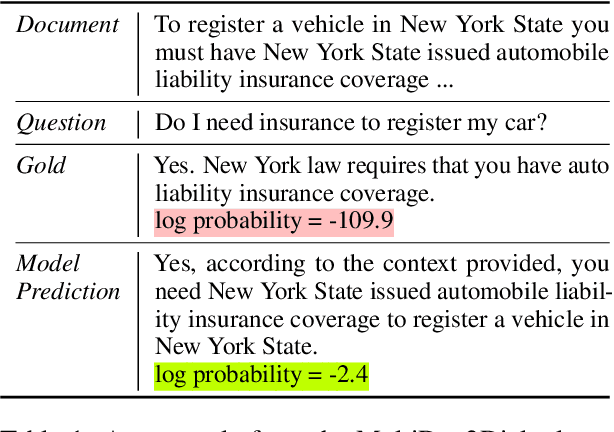
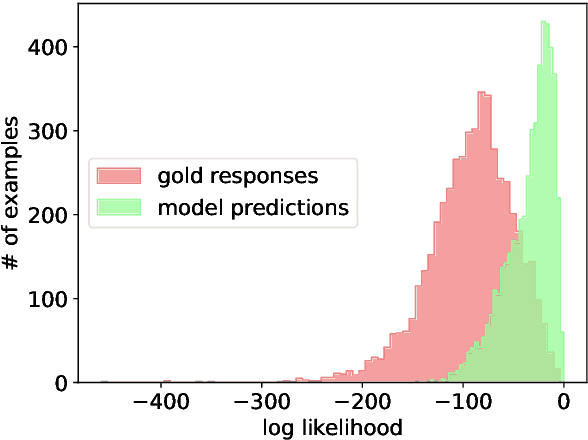
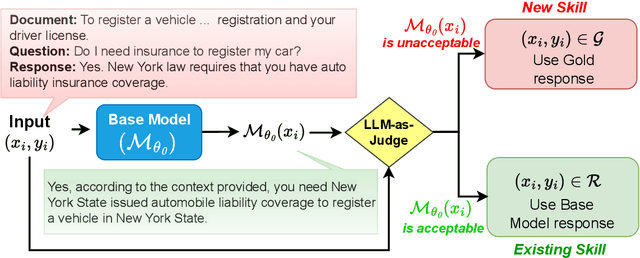

Abstract:Fine-tuning Large Language Models (LLMs) on specific datasets is a common practice to improve performance on target tasks. However, this performance gain often leads to overfitting, where the model becomes too specialized in either the task or the characteristics of the training data, resulting in a loss of generalization. This paper introduces Selective Self-Rehearsal (SSR), a fine-tuning approach that achieves performance comparable to the standard supervised fine-tuning (SFT) while improving generalization. SSR leverages the fact that there can be multiple valid responses to a query. By utilizing the model's correct responses, SSR reduces model specialization during the fine-tuning stage. SSR first identifies the correct model responses from the training set by deploying an appropriate LLM as a judge. Then, it fine-tunes the model using the correct model responses and the gold response for the remaining samples. The effectiveness of SSR is demonstrated through experiments on the task of identifying unanswerable queries across various datasets. The results show that standard SFT can lead to an average performance drop of up to $16.7\%$ on multiple benchmarks, such as MMLU and TruthfulQA. In contrast, SSR results in close to $2\%$ drop on average, indicating better generalization capabilities compared to standard SFT.
Power Scheduler: A Batch Size and Token Number Agnostic Learning Rate Scheduler
Aug 23, 2024Abstract:Finding the optimal learning rate for language model pretraining is a challenging task. This is not only because there is a complicated correlation between learning rate, batch size, number of training tokens, model size, and other hyperparameters but also because it is prohibitively expensive to perform a hyperparameter search for large language models with Billions or Trillions of parameters. Recent studies propose using small proxy models and small corpus to perform hyperparameter searches and transposing the optimal parameters to large models and large corpus. While the zero-shot transferability is theoretically and empirically proven for model size related hyperparameters, like depth and width, the zero-shot transfer from small corpus to large corpus is underexplored. In this paper, we study the correlation between optimal learning rate, batch size, and number of training tokens for the recently proposed WSD scheduler. After thousands of small experiments, we found a power-law relationship between variables and demonstrated its transferability across model sizes. Based on the observation, we propose a new learning rate scheduler, Power scheduler, that is agnostic about the number of training tokens and batch size. The experiment shows that combining the Power scheduler with Maximum Update Parameterization (muP) can consistently achieve impressive performance with one set of hyperparameters regardless of the number of training tokens, batch size, model size, and even model architecture. Our 3B dense and MoE models trained with the Power scheduler achieve comparable performance as state-of-the-art small language models. We open-source these pretrained models at https://ibm.biz/BdKhLa.
Scaling Granite Code Models to 128K Context
Jul 18, 2024Abstract:This paper introduces long-context Granite code models that support effective context windows of up to 128K tokens. Our solution for scaling context length of Granite 3B/8B code models from 2K/4K to 128K consists of a light-weight continual pretraining by gradually increasing its RoPE base frequency with repository-level file packing and length-upsampled long-context data. Additionally, we also release instruction-tuned models with long-context support which are derived by further finetuning the long context base models on a mix of permissively licensed short and long-context instruction-response pairs. While comparing to the original short-context Granite code models, our long-context models achieve significant improvements on long-context tasks without any noticeable performance degradation on regular code completion benchmarks (e.g., HumanEval). We release all our long-context Granite code models under an Apache 2.0 license for both research and commercial use.
The infrastructure powering IBM's Gen AI model development
Jul 07, 2024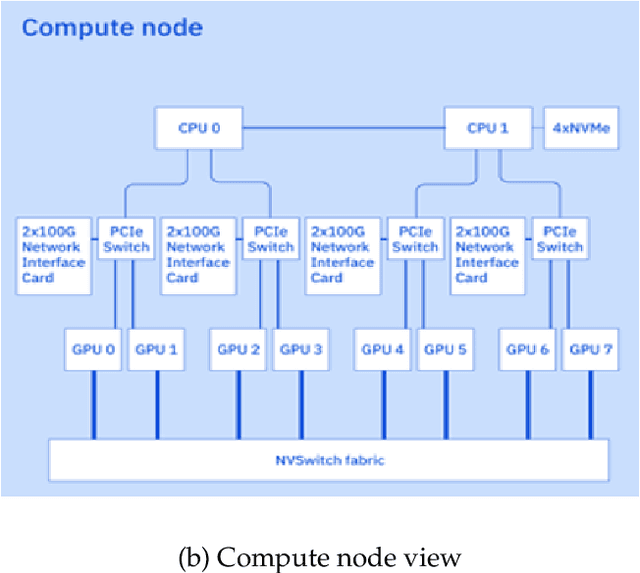
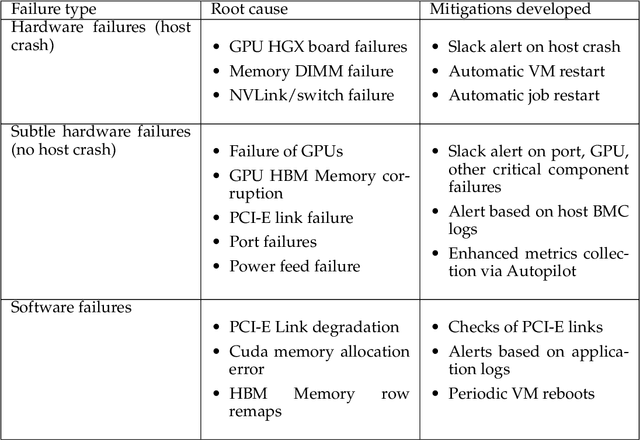
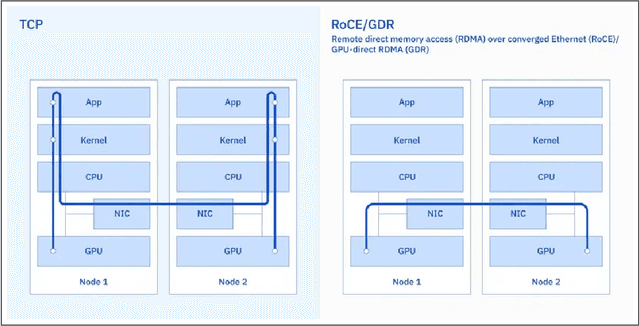

Abstract:AI Infrastructure plays a key role in the speed and cost-competitiveness of developing and deploying advanced AI models. The current demand for powerful AI infrastructure for model training is driven by the emergence of generative AI and foundational models, where on occasion thousands of GPUs must cooperate on a single training job for the model to be trained in a reasonable time. Delivering efficient and high-performing AI training requires an end-to-end solution that combines hardware, software and holistic telemetry to cater for multiple types of AI workloads. In this report, we describe IBM's hybrid cloud infrastructure that powers our generative AI model development. This infrastructure includes (1) Vela: an AI-optimized supercomputing capability directly integrated into the IBM Cloud, delivering scalable, dynamic, multi-tenant and geographically distributed infrastructure for large-scale model training and other AI workflow steps and (2) Blue Vela: a large-scale, purpose-built, on-premises hosting environment that is optimized to support our largest and most ambitious AI model training tasks. Vela provides IBM with the dual benefit of high performance for internal use along with the flexibility to adapt to an evolving commercial landscape. Blue Vela provides us with the benefits of rapid development of our largest and most ambitious models, as well as future-proofing against the evolving model landscape in the industry. Taken together, they provide IBM with the ability to rapidly innovate in the development of both AI models and commercial offerings.
Reducing Transformer Key-Value Cache Size with Cross-Layer Attention
May 21, 2024Abstract:Key-value (KV) caching plays an essential role in accelerating decoding for transformer-based autoregressive large language models (LLMs). However, the amount of memory required to store the KV cache can become prohibitive at long sequence lengths and large batch sizes. Since the invention of the transformer, two of the most effective interventions discovered for reducing the size of the KV cache have been Multi-Query Attention (MQA) and its generalization, Grouped-Query Attention (GQA). MQA and GQA both modify the design of the attention block so that multiple query heads can share a single key/value head, reducing the number of distinct key/value heads by a large factor while only minimally degrading accuracy. In this paper, we show that it is possible to take Multi-Query Attention a step further by also sharing key and value heads between adjacent layers, yielding a new attention design we call Cross-Layer Attention (CLA). With CLA, we find that it is possible to reduce the size of the KV cache by another 2x while maintaining nearly the same accuracy as unmodified MQA. In experiments training 1B- and 3B-parameter models from scratch, we demonstrate that CLA provides a Pareto improvement over the memory/accuracy tradeoffs which are possible with traditional MQA, enabling inference with longer sequence lengths and larger batch sizes than would otherwise be possible
Granite Code Models: A Family of Open Foundation Models for Code Intelligence
May 07, 2024



Abstract:Large Language Models (LLMs) trained on code are revolutionizing the software development process. Increasingly, code LLMs are being integrated into software development environments to improve the productivity of human programmers, and LLM-based agents are beginning to show promise for handling complex tasks autonomously. Realizing the full potential of code LLMs requires a wide range of capabilities, including code generation, fixing bugs, explaining and documenting code, maintaining repositories, and more. In this work, we introduce the Granite series of decoder-only code models for code generative tasks, trained with code written in 116 programming languages. The Granite Code models family consists of models ranging in size from 3 to 34 billion parameters, suitable for applications ranging from complex application modernization tasks to on-device memory-constrained use cases. Evaluation on a comprehensive set of tasks demonstrates that Granite Code models consistently reaches state-of-the-art performance among available open-source code LLMs. The Granite Code model family was optimized for enterprise software development workflows and performs well across a range of coding tasks (e.g. code generation, fixing and explanation), making it a versatile all around code model. We release all our Granite Code models under an Apache 2.0 license for both research and commercial use.
Dense Training, Sparse Inference: Rethinking Training of Mixture-of-Experts Language Models
Apr 08, 2024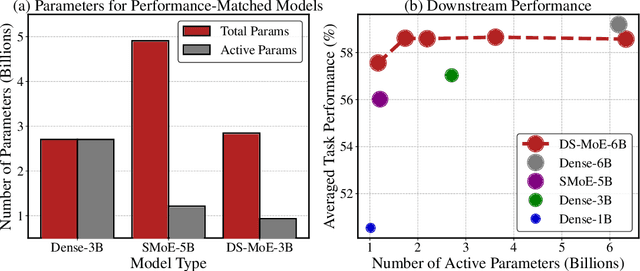
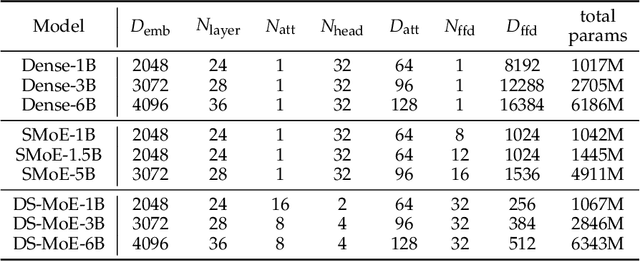


Abstract:Mixture-of-Experts (MoE) language models can reduce computational costs by 2-4$\times$ compared to dense models without sacrificing performance, making them more efficient in computation-bounded scenarios. However, MoE models generally require 2-4$\times$ times more parameters to achieve comparable performance to a dense model, which incurs larger GPU memory requirements and makes MoE models less efficient in I/O-bounded scenarios like autoregressive generation. In this work, we propose a hybrid dense training and sparse inference framework for MoE models (DS-MoE) which achieves strong computation and parameter efficiency by employing dense computation across all experts during training and sparse computation during inference. Our experiments on training LLMs demonstrate that our DS-MoE models are more parameter-efficient than standard sparse MoEs and are on par with dense models in terms of total parameter size and performance while being computationally cheaper (activating 30-40% of the model's parameters). Performance tests using vLLM show that our DS-MoE-6B model runs up to $1.86\times$ faster than similar dense models like Mistral-7B, and between $1.50\times$ and $1.71\times$ faster than comparable MoEs, such as DeepSeekMoE-16B and Qwen1.5-MoE-A2.7B.
Mitigating the Impact of Outlier Channels for Language Model Quantization with Activation Regularization
Apr 04, 2024Abstract:We consider the problem of accurate quantization for language models, where both the weights and activations are uniformly quantized to 4 bits per parameter, the lowest bitwidth format natively supported by GPU hardware. In this context, the key challenge is activation quantization: it is known that language models contain outlier channels whose values on average are orders of magnitude higher than than other channels, which prevents accurate low-bitwidth quantization with known techniques. We systematically study this phenomena and find that these outlier channels emerge early in training, and that they occur more frequently in layers with residual streams. We then propose a simple strategy which regularizes a layer's inputs via quantization-aware training (QAT) and its outputs via activation kurtosis regularization. We show that regularizing both the inputs and outputs is crucial for preventing a model's "migrating" the difficulty in input quantization to the weights, which makes post-training quantization (PTQ) of weights more difficult. When combined with weight PTQ, we show that our approach can obtain a W4A4 model that performs competitively to the standard-precision W16A16 baseline.
DeiT-LT Distillation Strikes Back for Vision Transformer Training on Long-Tailed Datasets
Apr 03, 2024
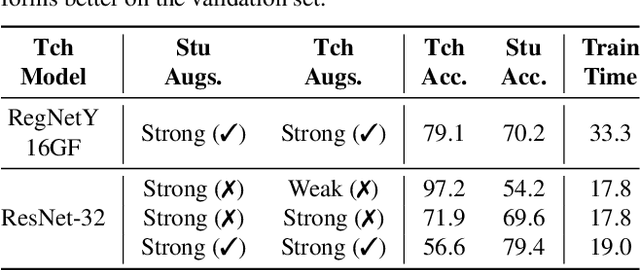
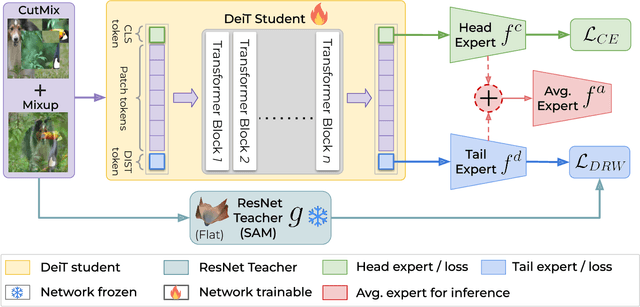
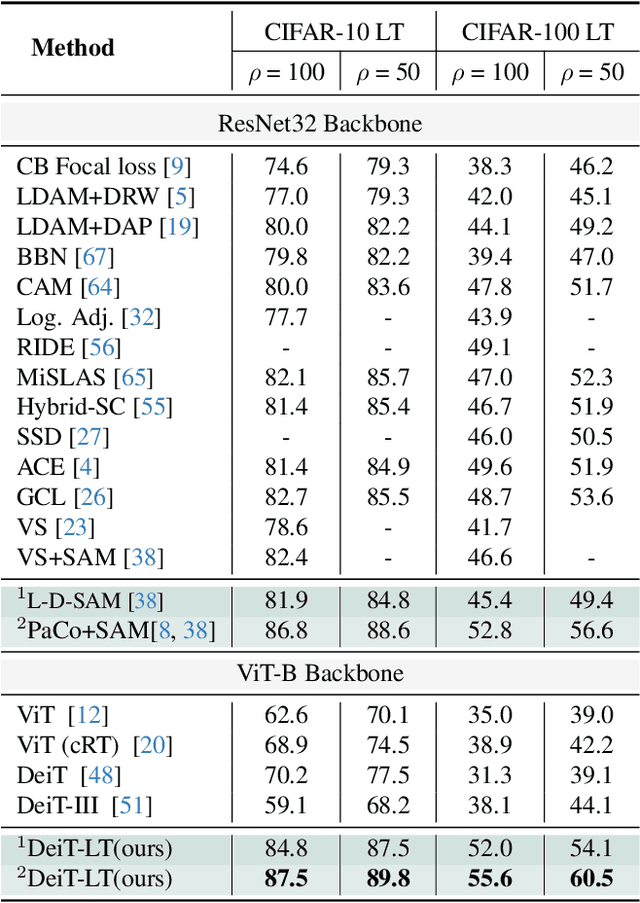
Abstract:Vision Transformer (ViT) has emerged as a prominent architecture for various computer vision tasks. In ViT, we divide the input image into patch tokens and process them through a stack of self attention blocks. However, unlike Convolutional Neural Networks (CNN), ViTs simple architecture has no informative inductive bias (e.g., locality,etc. ). Due to this, ViT requires a large amount of data for pre-training. Various data efficient approaches (DeiT) have been proposed to train ViT on balanced datasets effectively. However, limited literature discusses the use of ViT for datasets with long-tailed imbalances. In this work, we introduce DeiT-LT to tackle the problem of training ViTs from scratch on long-tailed datasets. In DeiT-LT, we introduce an efficient and effective way of distillation from CNN via distillation DIST token by using out-of-distribution images and re-weighting the distillation loss to enhance focus on tail classes. This leads to the learning of local CNN-like features in early ViT blocks, improving generalization for tail classes. Further, to mitigate overfitting, we propose distilling from a flat CNN teacher, which leads to learning low-rank generalizable features for DIST tokens across all ViT blocks. With the proposed DeiT-LT scheme, the distillation DIST token becomes an expert on the tail classes, and the classifier CLS token becomes an expert on the head classes. The experts help to effectively learn features corresponding to both the majority and minority classes using a distinct set of tokens within the same ViT architecture. We show the effectiveness of DeiT-LT for training ViT from scratch on datasets ranging from small-scale CIFAR-10 LT to large-scale iNaturalist-2018.
 Add to Chrome
Add to Chrome Add to Firefox
Add to Firefox Add to Edge
Add to Edge